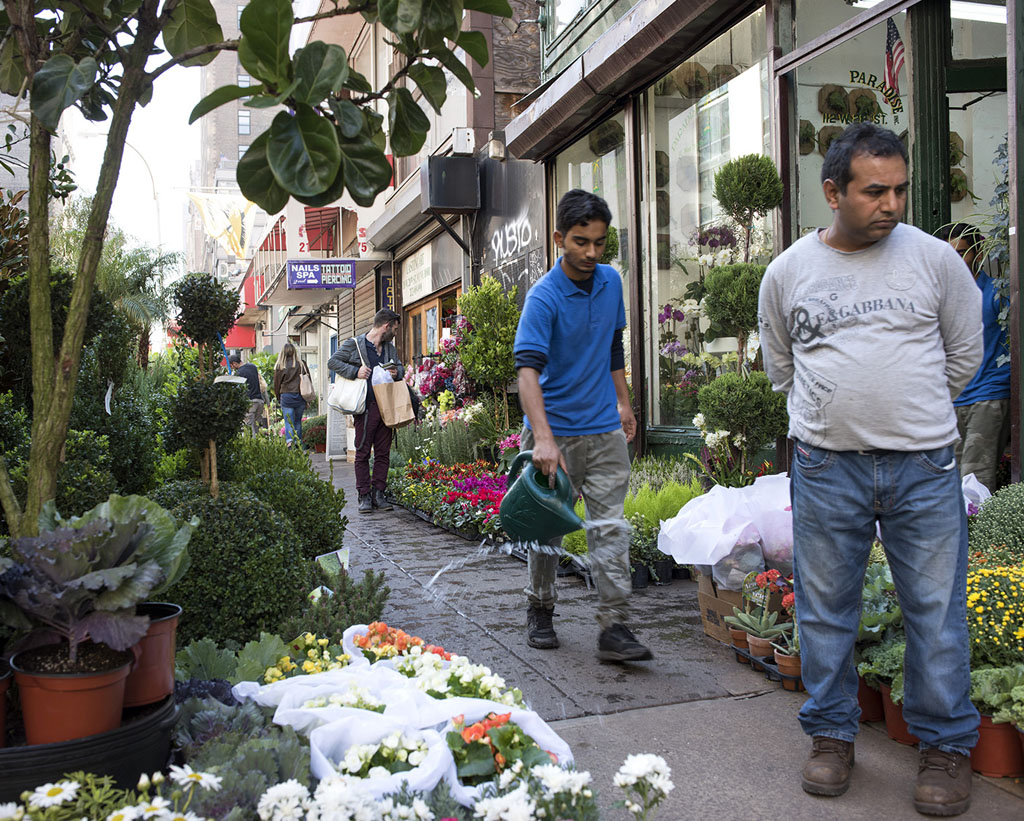23-07-18 // UNDERSTANDING URBAN NARRATIVES: WHAT CANNOT BE MEASURED – INTERVIEW WITH CASSIM SHEPARD

Midtown Manhattan, photo from Citymakers book by Alex Fradkin
Bernd Upmeyer spoke with Cassim Shepard about “Narrative Urbanism”. Shepard is an Adjunct Assistant Professor at Columbia GSAPP. He produces non-fiction media about cities, buildings, and places. Trained as an urban planner, geographer, and documentary filmmaker, he lectures widely about the craft of visual storytelling in urban analysis, planning, and design. His film and video work has been commissioned by, and screened at, the Venice Architecture Biennale, the Ford Foundation, the Cooper-Hewitt Smithsonian Design Museum, and the United Nations, among many other venues around the world. In addition to teaching at Columbia GSAPP he has been a guest lecturer in the Cities Programme of the London School of Economics and a Poiesis Fellow at the Institute for Public Knowledge at New York University. The interview took place via Skype on July 23, 2018.
The Power of Narratives
Bernd Upmeyer: One important outcome of our last MONU (issue #28) on “Client-shaped Urbanism” was the realization that in order to create better cities, we need to improve the communication among everybody involved in the creation of cities, whether they are clients, developers, municipalities, architects, urban designers, or the users of cities. We believe that for architects and urban designers to make themselves understood better, is to use the power of “narratives”, helping them to connect not only to experts and intellectuals in the field, but to everybody else too. Do you think that narratives have that kind of power?
Cassim Shepard: Yes, absolutely. I do think that narratives are a means towards greater communication between the different parties that you are describing. Narratives within urbanism are an important part of my work, especially when it comes to the communication between professional designers and the people who would be affected by their designs and plans. Yet, the greater potential and the greater necessity of narratives in urbanism is to think broadly about creating greater public literacy around urban developments in general. Not only about particular projects, but also about the complexity of how urban change takes place and about who manages urban change and who are some of the players, who are involved in the complex decision-making. That goes beyond design and includes elected officials and all the people who work in the local government. So, for me, the goal and the opportunity is to encourage broader literacy and legibility about the complexity of urban change. I think that there is absolutely potential and need for greater communication and community engagement in specific projects, but I don’t believe that the hope should be simply to get communities to agree to a new development project after the project has already been conceived. It shouldn’t be about making a story more marketable. It should be about trying to bring narrative strategies into the way we understand the complexity of a site from the very beginning and then throughout project you must analyze and interpret and develop what the project is about.
BU: And how can we achieve that? With the help of films or through installations, exhibitions or debates, or something else?
CS: I think that we need to use all of the tools that are at our disposal in order to create a better general culture of understanding around design, especially urban design and urban development issues. And all of the tools at our disposal, at least for me, include filmmaking and writing and speaking and teaching. I do not think that every designer in the world needs to become fluent in the language of filmmaking necessarily. But I do think that moving images in this day and age are particularly effective forms of communication. Moving images have the capacity to make people want to engage in ways that a traditional community meeting does not. However, what I am most interested in is the use of storytelling but also story-listening to understand the narrative of a place…
… the complete interview was published in MONU #29 on the topic of Narrative Urbanism on October 15, 2018.
Title: Understanding Urban Narratives: What Cannot Be Measured
Project: Interview with Cassim Shepard
Date: July 2018
Type: Commissioned interview
Topic: Narrative Urbanism
Organizer: MONU
Status: Published
Publications: MONU #29, P. 4-11
Interviewer: Bernd Upmeyer